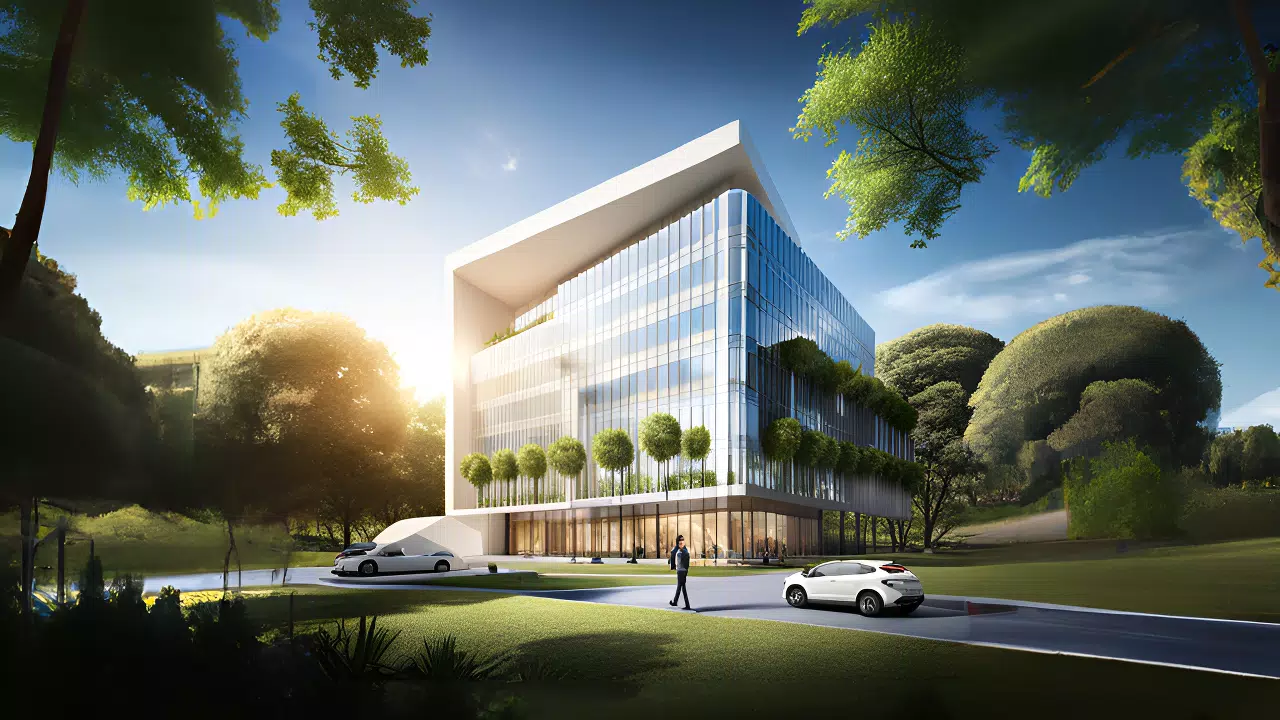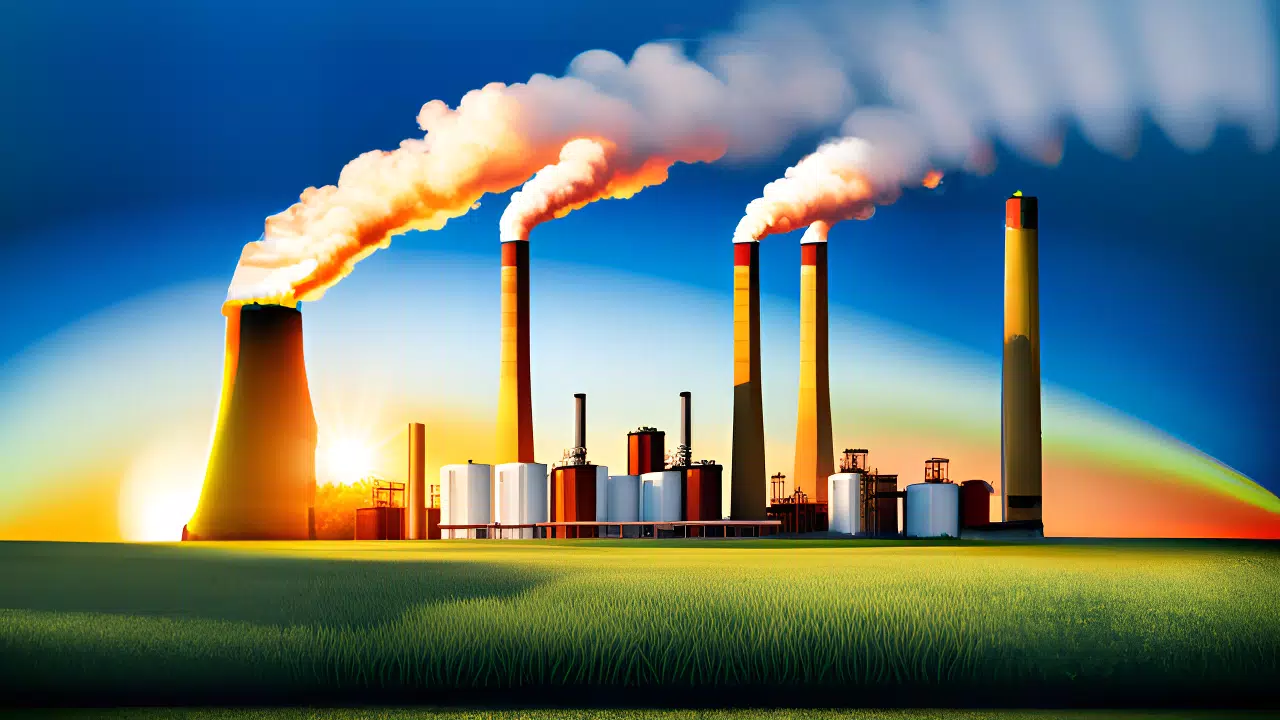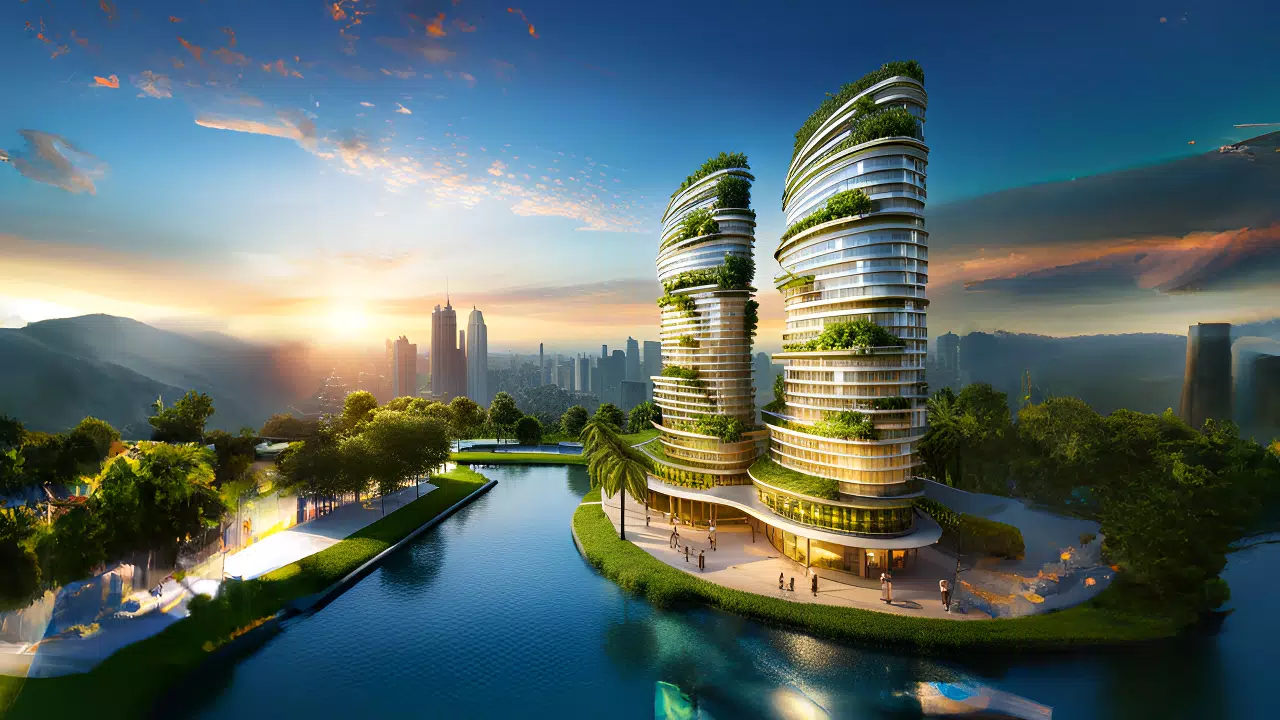
Introduction to Romgaz: A Leading Romanian Natural Gas Company
Romgaz, established in 1909, is one of Romania's largest natural gas producers. Its foothold in the natural gas industry is attributed to its dedicated efforts in exploration, production, storage, and distribution of natural gas. However, its influence extends beyond the natural gas sector into electricity production through its power plants. Romgaz is listed on the Bucharest Stock Exchange and London Stock Exchange.
Commitment to Sustainability and Corporate Social Responsibility (CSR)
Romgaz has a strong commitment to sustainability and CSR. It recognizes the impact its operations have on the environment and local communities. Among its measures towards sustainable development, Romgaz is working towards reducing its environmental footprint and promoting clean energy solutions.
Romgaz has devised a far-reaching strategy to carry on using natural gas as a bridge fuel for the gradual switch to renewable energy sources. The company is dedicated to broadening its renewable energy portfolio with an emphasis on wind and solar power as well as encouraging energy efficiency.
Positive and Negative Impacts of Operations
Romgaz's operations have both positive and negative impacts on the environment and local communities. On the one hand, the company significantly contributes to the country's energy security. On the other hand, it can negatively impact local communities through social displacement or environmental degradation.
To counter negative impacts, Romgaz takes various measures to reduce its environmental footprint. For instance, it has implemented energy efficiency measures in its buildings and facilities, reduced water consumption through recycling and reuse, and invested in wastewater treatment plants.
Conclusion
Romgaz's commitment to sustainable development is noteworthy. Its focus on developing renewable energy solutions is an indication of a more environmentally conscious approach to business operations. However, there is still much room for improvement in addressing negative impacts on local communities and the environment.

Natural Gas Production and Exploration in Romania: A Look at Romgaz's Efforts
Romania has been harnessing its abundant natural gas reserves since the early 20th century. Today, Romgaz is a key player in natural gas production and exploration, operating over 3,600 wells nationwide. This article explores Romgaz's contributions to natural gas production and its impact on Romania's energy sector.
Romgaz's Production Capacity and Exploration Techniques
Romgaz has an annual production capacity of around 5 billion cubic meters of natural gas, and they continue to develop new fields to augment their reserves. The company is also investing in advanced technologies for exploration, such as 3D seismic surveys and drilling techniques. With these methods, Romgaz can obtain more accurate information about the characteristics of natural gas reserves, allowing them to optimize their drilling process and reduce exploration costs.
Advantages of Natural Gas Production
The extraction of natural gas in Romania has been a boon for the country in multiple ways. It aids in reducing Romania's reliance on energy imports, thereby enhancing energy security. Natural gas is also deemed a cleaner energy option compared to coal or oil, which contributes to lower greenhouse gas emissions. Consequently, this assists Romania in achieving its climate change goals as per the EU's 2030 Energy and Climate Framework.
Environmental Challenges
While natural gas offers substantial advantages, its extraction can have detrimental environmental consequences. The drilling process, for instance, requires a substantial amount of water, which, if not properly managed, can result in water contamination. Additionally, methane leaks during extraction can cause significant environmental damage due to methane's status as a potent greenhouse gas.
Romgaz's Sustainability Efforts
To minimize the environmental impact of its operations, Romgaz is investing in research and development projects. These efforts aim to develop cleaner technologies and new environmentally-friendly drilling techniques. One of Romgaz's key initiatives is to reduce methane leaks during the extraction of natural gas. According to data from the International Energy Agency, reducing these leaks could yield substantial reductions in greenhouse gas emissions.
In conclusion, Romgaz plays a significant role in natural gas production and exploration in Romania. While this activity has significant benefits for the country, it also poses environmental risks. Romgaz is working to mitigate these risks by investing in research and development projects and new environmentally friendly drilling techniques. By doing so, they can continue to provide clean and affordable energy to Romania while minimizing their impact on the environment.

Electricity Production: Romgaz's Role in Romania's Energy Market
In addition to natural gas, Romgaz has also ventured into electricity production. This section will explore the company's power plants and their role in Romania's electricity market.
Romgaz Power Plants
Romgaz owns and operates the Iernut Power Plant, one of the most efficient gas-fired power plants in Romania, with a capacity of 400 MW. Located in Mureș County, it is equipped with two steam turbine generators and two gas turbines. The Iernut Power Plant is said to be capable of covering the electricity needs of around 1.5 million households, according to Romania-Insider. The company is also involved in the construction of a new 430 MW gas-fired power plant in Mintia, Hunedoara County. The construction of the power plant is expected to take 36 months, with the first phase already completed. The new plant is expected to contribute significantly to Romania’s energy sector.
Use of Natural Gas
Romgaz's power plants utilize natural gas as their primary fuel source, which is a more environmentally conscious choice compared to coal-fired power plants. Natural gas emits fewer harmful pollutants and greenhouse gases than coal, resulting in a reduced carbon footprint for the energy produced. Additionally, natural gas offers economic benefits as it is generally more affordable than coal and can be utilized more efficiently in combined cycle power plants.
Contribution to Energy Security
By generating electricity locally, Romgaz makes a substantial contribution to Romania's energy diversification and security. Domestically produced electricity lessens the reliance on imported energy sources, enhancing energy independence. This bolsters Romania's energy security and guarantees a stable supply of electricity for its citizens.
Environmentally Conscious Approach
Though natural gas power plants produce lower greenhouse gas emissions than coal or oil-based plants, they still impact the environment. Thus, Romgaz is exploring opportunities in renewable energy production to further reduce its carbon footprint. This initiative aligns with the European Union's 2030 Climate and Energy Framework, which targets a 40% reduction in greenhouse gas emissions by 2030. According to Reuters, Romgaz is contemplating investments in onshore wind or solar projects in Dobrogea, a region in southeastern Romania renowned for its favorable wind and solar conditions.
Strict Regulations
Romgaz's electricity generation operations are strictly regulated and adhere to stringent environmental norms. The company employs measures to monitor and control emissions, prevent environmental disasters like oil spills, and reduce its environmental footprint. Additionally, Romgaz invests in state-of-the-art technology to ensure that its processes are efficient and eco-friendly.
In conclusion, Romgaz is a key player in Romania's electricity sector, producing electricity using natural gas-fired power plants that contribute significantly to the country's energy diversification and security. The company has a responsible and sustainable approach to production, continually exploring renewable energy opportunities while adhering to strict regulations and environmental standards.

Marketing and Technological Transport
Romgaz, a Romanian company specializing in the production of natural gas and electricity, is also involved in the marketing and technological transport aspects of the energy sector. In this article, we will discuss the impact of Romgaz's operations on the sector, with a particular focus on marketing and transportation.
Marketing Romgaz's Natural Gas
Romgaz has a well-established domestic market and also exports natural gas to other countries. According to Balkan Green Energy News, the company has signed contracts to export natural gas to Hungary through a pipeline connection. Romgaz also signed an agreement with Poland's PGNiG to supply natural gas in 2021. The company has been aggressively pursuing new opportunities to export its natural gas.
Transportation Infrastructure
Romgaz has a well-developed infrastructure to transport natural gas across Romania through pipelines. The company is responsible for constructing and operating pipelines that connect its production centers with consumption points. The transport infrastructure helps improve energy security by reducing the country's reliance on external suppliers.
Storage Facilities
In addition to pipelines, Romgaz also utilizes underground storage facilities to guarantee a consistent supply of natural gas all year round. The company operates two storage facilities, one in Transylvania and another in Moldova, with a combined capacity of 2.9 billion cubic meters of natural gas. These facilities offer flexibility in managing natural gas supply and enable Romgaz to swiftly respond to market demands.
Environmental Impact
While Romgaz's transportation infrastructure offers numerous advantages, pipeline construction and operation can also have detrimental environmental consequences, including habitat disruption and the potential for leaks. According to the International Tanker Owners Pollution Federation Limited (ITOPF), oil spills and leaks can have catastrophic impacts on both the environment and human populations. As such, Romgaz prioritizes maintaining stringent safety standards for its transportation infrastructure to mitigate these risks effectively.
Technological Advancements
To mitigate the environmental impact of its activities, Romgaz is exploring innovative technologies. The company has adopted a SCADA (Supervisory Control And Data Acquisition) system, which enables real-time monitoring of pipeline status, early detection of potential issues, and reduced risk of leaks or malfunctions.
Conclusion
The marketing and technological transport operations of Romgaz have a significant impact on the energy sector. The company's natural gas marketing efforts have enabled it to expand its reach both domestically and internationally. Furthermore, Romgaz's infrastructure for transporting natural gas has enhanced energy security by reducing the country's dependence on external suppliers. However, pipeline construction and operation can have substantial environmental implications. Romgaz is dedicated to mitigating these risks by upholding rigorous safety standards and harnessing cutting-edge technologies to minimize the environmental footprint of its operations.

Sustainability and Corporate Social Responsibility
As a key player in the energy industry, Romgaz has a duty to conduct its operations with sustainability and ethical practices at the forefront. This portion of the report will delve into the company's initiatives and efforts in promoting sustainability and corporate social responsibility (CSR).
Romgaz's integrated management system
Romgaz's integrated management system (IMS) is a framework designed to ensure environmental protection, quality, and safety across all of its activities. The system is based on international standards such as ISO 14001, ISO 45001, and ISO 9001. It covers all aspects of Romgaz's operations, from exploration and production to transportation and sales.
The IMS enables Romgaz to oversee its operations and ensure adherence to legal mandates and industry norms. It also offers a pathway for continuous enhancement by pinpointing areas for optimization and establishing performance goals.
One of the key benefits of the IMS is that it provides a systematic approach to managing environmental risks. Romgaz conducts environmental impact assessments (EIAs) for all new projects and activities to identify potential impacts on the environment. The company then develops mitigation measures to minimize these impacts and monitors their effectiveness.
Annual sustainability reports
Romgaz publishes annual sustainability reports that provide detailed information on its performance in various CSR areas. The reports cover topics such as environmental impact, health and safety, social responsibility, human resources management, and ethics.
The reports are designed to provide transparency and accountability to stakeholders by disclosing information on Romgaz's performance against targets and industry benchmarks. They also provide a platform for stakeholder engagement by inviting feedback on the company's sustainability initiatives.
Romgaz's most recent sustainability report showcases progress in lessening environmental impact, enhancing health and safety performance, promoting social development, and strengthening corporate governance. Notably, the company has achieved a 3% reduction in greenhouse gas emissions year-over-year and boosted investment in community development initiatives by 5%.
Environmental and social initiatives
Romgaz is committed to various initiatives that uphold environmental preservation, education, culture, and social well-being. One of their prominent endeavors is the Romgaz Foundation, which extends support to projects focused on education, culture, and social services. This foundation has sponsored projects ranging from the restoration of historical landmarks to the development of eco-friendly structures and the awarding of scholarships to students in need.
Romgaz is also committed to reducing its environmental impact by promoting clean energy solutions. The company is exploring opportunities to develop renewable energy projects such as wind and solar power. In addition, Romgaz is investing in technology and innovation to improve its operational efficiency and reduce greenhouse gas emissions.
Balancing economic growth with environmental protection and social responsibility
Romgaz faces challenges in balancing economic growth with environmental protection and social responsibility. The company operates in a highly regulated industry that requires compliance with strict environmental and safety standards. At the same time, Romgaz must maintain profitability to meet the expectations of its shareholders.
One of the key challenges for Romgaz is reducing its greenhouse gas emissions. While the company has made progress in this area, it still has a long way to go to meet its target of reducing emissions by 30% by 2030. Romgaz must balance investments in clean energy solutions with its existing core business to achieve this goal.
Another challenge for Romgaz is maintaining its social license to operate. The company operates in areas where there is a high level of community engagement and expectation. Romgaz must ensure that it engages with stakeholders in a transparent and respectful manner to build trust and maintain its social license.
Conclusion
Romgaz has made significant progress in promoting sustainability and CSR initiatives. The company's integrated management system, annual sustainability reports, environmental and social initiatives, and commitment to reducing greenhouse gas emissions are all positive steps towards a more sustainable future.
However, Romgaz also faces significant challenges in balancing economic growth with environmental protection and social responsibility. Continued investment in sustainable practices is essential for Romgaz's long-term success and positive impact on society. By working towards a more sustainable future, Romgaz can ensure that it operates in a way that benefits both the company and the communities it serves.
